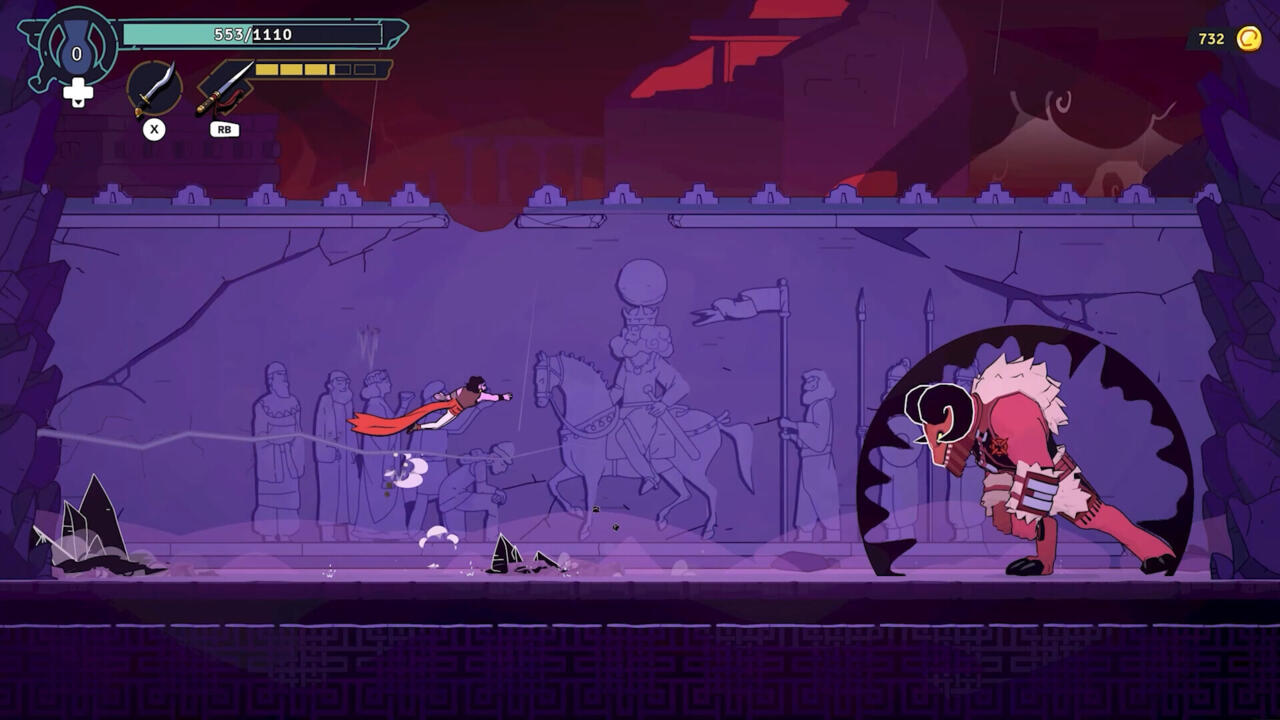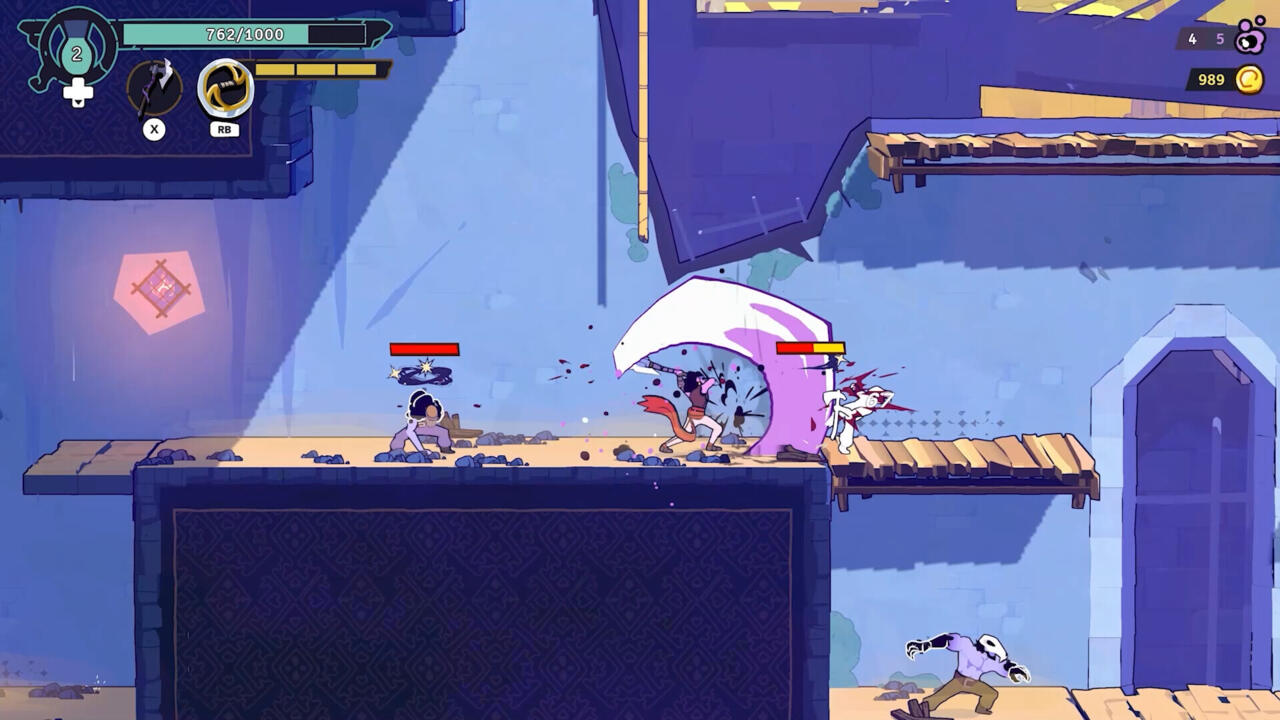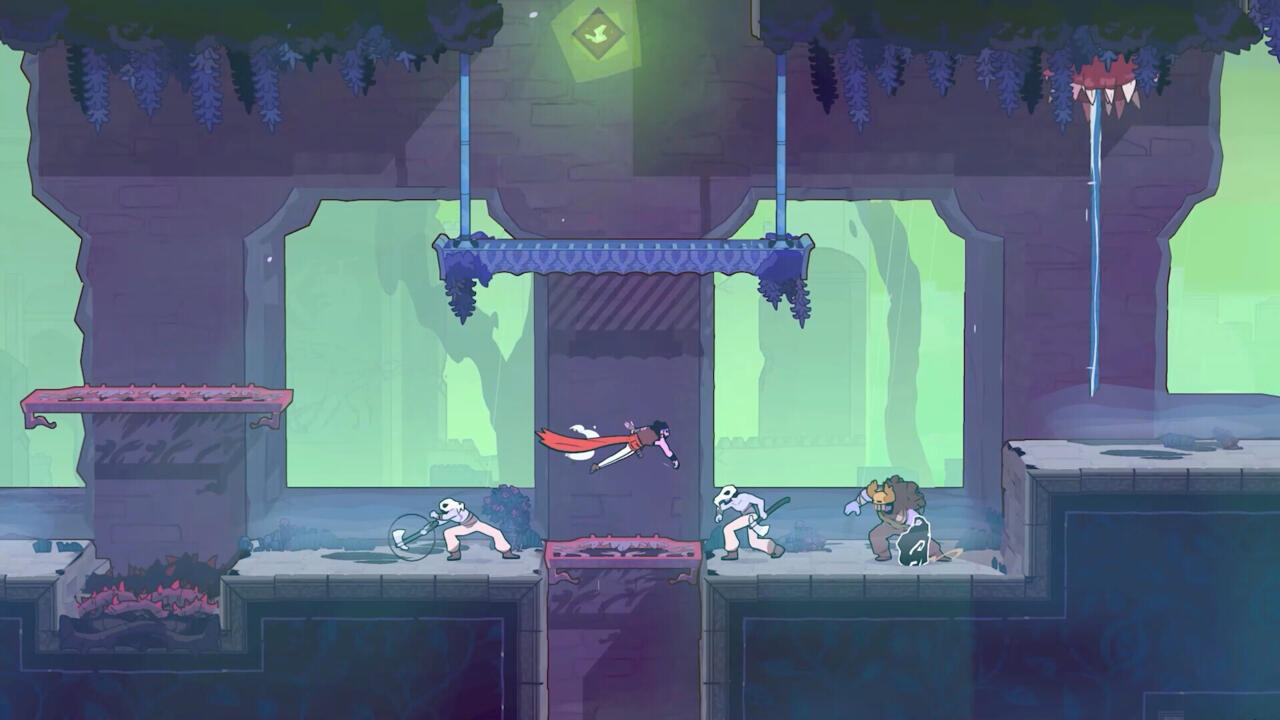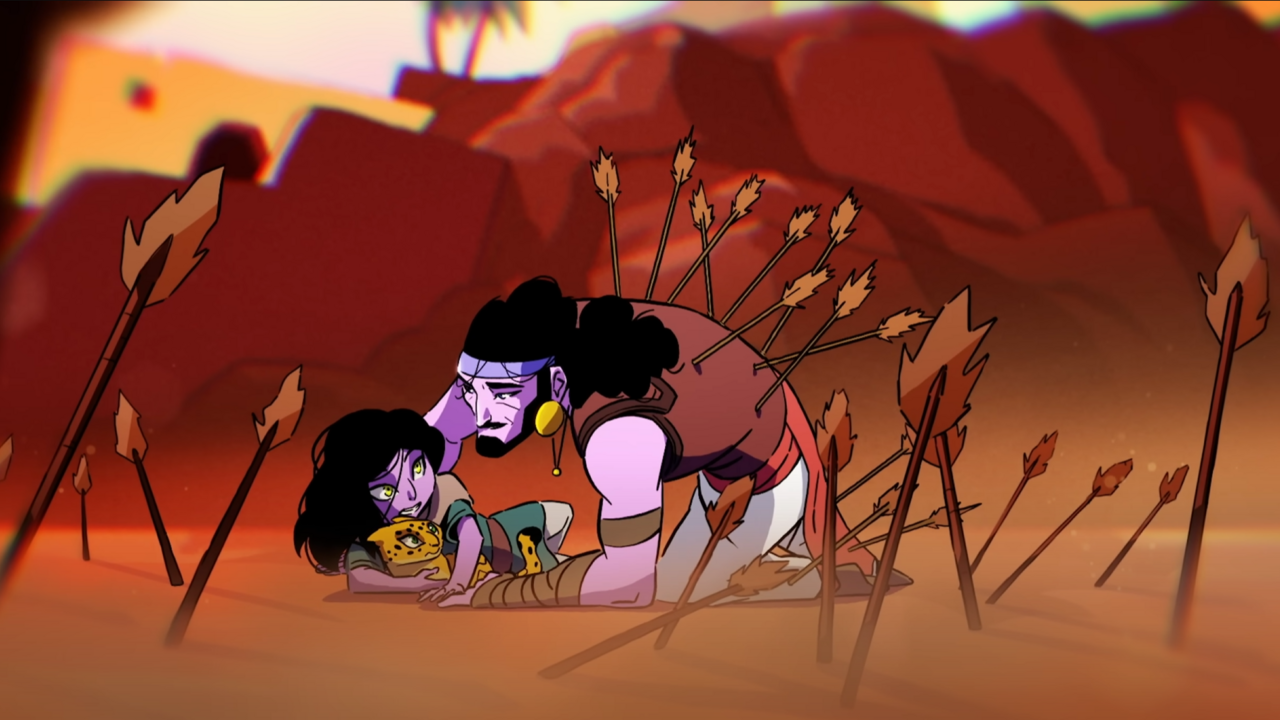Still in early access, Evil Empire’s The Rogue Prince of Persia is already an entertaining 2D roguelike, building a world composed of vibrant colors and dozens of monstrous soldiers that are ever-so-delightful to slice and crush over and over. For now, the game falters when it comes to delivering a compelling story, but its use of narrative breadcrumbs to lead the player through its assortment of levels helps to maintain an incentive to push forward when its challenging combat presents a roadblock that takes a handful of attempts to overcome. It’s still too early to say anything definitive about the full game, but what’s here is more than a sound bedrock–this is a great spiritual successor to Dead Cells that builds on an already engaging combat loop with smooth parkour and movement mechanics.
In The Rogue Prince of Persia, you play as the eldest of two princes, who has found himself stuck in a time loop. The Huns have invaded the prince’s home city, utilizing a strange dark magic that has overwhelmed Persia’s forces. Possessing a medallion that revives him in an oasis encampment just outside the city three days into the invasion every time he dies, the prince has to repeatedly fight his way through the Huns to reach their leader and kill him. While working his way through the various levels of the game, the prince will also run across allies and members of his family–some captured, others still fighting the Huns–whom he can aid by utilizing knowledge gleaned from multiple loops.
The prince’s investigations play out as a mind board with pictures of characters and notes that are connected with lines, hinting at what you might have to do next to proceed in the game. A note discovered in the Huns’ camp reveals that an important individual has been captured by the game’s first boss, for example, encouraging you to reach said boss to question them as to their identity. Some of these investigations require you to travel to specific areas in a certain order over the course of a single run–I once had to talk to someone in one of the two starting areas to grab a specific item, travel to another area to use said item, and then go onto a third location to see how the used item had affected the environment. Dying amid a run would reset the process, as the nature of the time loop would mean that I never spoke to the person in the first area in the first place.
This structure makes The Rogue Prince of Persia far more approachable than it would be otherwise, as clearing the first two bosses to reach the palace at the center of the city is quite the challenge. Could you manage to do so on your very first run? Certainly. But such a feat is unlikely without acquiring a few upgrades and learning the ropes of the game and the bosses’ patterns first. Connecting the threads of the mind board and crossing off these smaller goals are more feasible from the start, providing a means of achieving “victory” even when you lose. A half dozen or so runs into the game, I remember losing to the second boss again but just thinking, “Sure, maybe I didn’t beat this guy this time around, but I did manage to uncover who the first boss kidnapped and where I might be able to find them–let’s go save him!” I had lost but I still accomplished something, and that feeling made me want to jump right into another run and go again.

The Rogue Prince of Persia has superb gameplay flow, too. Though it takes a run or two to grasp the basics, the movement of the prince’s parkour and wall-running moves flow into an assortment of weapon attacks and combat moves, including a downward slam and dance-like dodge. Building on the mechanics of Dead Cells (a game that developer Evil Empire took over and continued to build on with post-launch expansions), The Rogue Prince of Persia feels like a spiritual successor–you start with a weak melee weapon and long-range tool but can find stronger options within each run. Each weapon comes with a unique ability, allowing you to approach the diverse assortment of enemies differently depending on what you’re choosing to use. When I first started, I was partial to the heavy-hitting Tabar, a slow-hitting axe-like weapon that stuns targets. But as I continued to play, I gravitated towards the claw-like Bagh Nakh that could unleash a fast and deadly special attack every time an enemy was killed, and the shortsword Falcata that grew stronger with every kill so long as I didn’t go longer than three seconds without killing someone.
During each run, you can also find talismans that give special effects to the prince whenever certain criteria are met. One talisman heals the prince for every fast-travel point he comes across, for example, while another unleashes a cloud of poisonous gas every time he hits an enemy with a long-range attack. You can only equip up to four talismans at a time and each can upgrade adjacent ones to improve their effects–one talisman might improve only the talisman equipped to the left of it, for instance, while another may improve both talismans to its right. Once a talisman is slotted in, you can’t change its position, encouraging you to think strategically in terms of which ones you equip and the positioning of those you do.

There’s a lot of variety when it comes to builds, both in terms of equipped weapons and talisman combinations. The weapons and talismans you find are lost with each death and the assortment of tools that you’ll find in each run is randomized, encouraging you to adapt and plan your build on the fly. No weapon or talisman felt so bad that I considered it worthless, but in this stage of early access, it does feel like a few options stand out as clear-cut go-to options. I always felt a little bit more confident going into a run with the compound bow as opposed to the grappling hook, for instance, and the talismans that unleash resin to slow enemies don’t feel as valuable as the ones that poison or burn enemies. Granted, that could just be my playstyle, but it does feel like The Rogue Prince of Persia needs a little tweaking here and there to bring its weaker-hitting weapons and talismans in line with the others.
The Rogue Prince of Persia’s characters also aren’t narratively compelling in this early access state. Though the quests they provide create breadcrumbs that are fun to chase, they’re enjoyable for how they provide short-term goals. From a storytelling standpoint, they aren’t all that intriguing and that largely is from the uninteresting characters that provide them. No one is all that interesting in The Rogue Prince of Persia, and the story falls a little flat right now because of it.

Conversely, the variety of locales and levels you visit have tremendous personality. Each incorporates its own unique color palette, environmental hurdles, and musical undertones. The Rogue Prince of Persia makes great use of color, with vibrant blues, purples, oranges, and yellows illuminating even the spookiest of locations with a mosaic of eye-popping expression. This is one of the best-looking games I’ve played all year. Though every level changes slightly each run, the general layout of each remains largely the same. This, along with the memorable colors, feeds into the game’s narrative theme of knowledge being power by acquainting the prince (and thereby you, the player) with a better understanding of where to go and what to do run to run, like someone getting better at navigating a time loop. At the same time, the shifting nature of smaller details maintains the idea that the prince’s memory (like ours) of each space is a little fluid–he can’t remember the exact makeup of every spot and the placement of each individual enemy, but he’s got a general idea of the major landmarks and pathways.
The Rogue Prince of Persia currently ends before you can reach its (presumably) final area and confront the Hun leader holding the prince’s city hostage. The mental narrative map is also incomplete, left on a cliffhanger part of the way through. So there’s more of this game to see and play that could address my concerns with the story. Even unfinished, however, The Rogue Prince of Persia is a great roguelike that offers hours of enjoyable runs. Its beautiful level design and flow-like combat more than make up for the game’s storytelling shortcomings and curate an experience that I’ll eagerly jump back into once there’s more of it to play.
